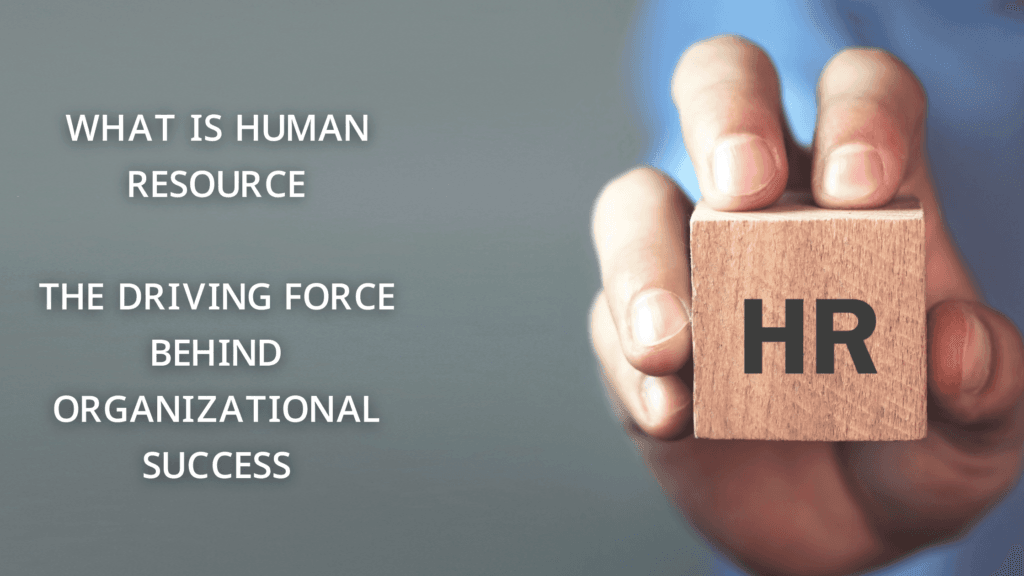Maintaining strong employee relations is essential for the success of any organization. Employee relations refer to the efforts that a company makes to manage the relationship between employers and employees. This relationship encompasses aspects such as hiring, performance management, communication, conflict resolution, and job satisfaction.
In this detailed blog, we’ll explore what employee relations mean, their importance in organizational success, real-world examples of companies excelling in this area, and strategies that can help improve the employer-employee relationships. We will also analyze data, trends, and frequently asked questions to give you a deep understanding of this crucial subject.
What are Employee Relations?
Employee Relations Defined
Employee relations (ER) are about fostering positive connections between employers and their employees. It includes all efforts that ensure employees feel valued, motivated, and satisfied with their roles. Unlike the older models that focused primarily on compliance and grievances, modern ER focuses on proactive engagement and creating a collaborative culture.
Example of Modern Employee Relations:
Imagine a company where employees are free to voice their opinions and concerns, feel recognized for their contributions, and have opportunities for career growth. This type of environment fosters loyalty, boosts productivity, and leads to an engaged workforce.
In contrast, poor employee relations can lead to a toxic work environment, high turnover rates, and low employee morale, impacting the organization’s performance and reputation.
Importance of Employee Relations in an Organization
1. Increased Employee Retention
Employee relations significantly impact retention rates. Employees are more likely to stay with a company where they feel respected, valued, and appreciated. When a company focuses on developing strong relationships with its employees, it shows a commitment to their well-being, which reduces turnover.
A study by Gallup found that highly engaged employees are 59% less likely to seek a job elsewhere. Employee retention can save companies substantial recruitment and training costs.
2. Boosting Productivity
Employee productivity is closely tied to their engagement and job satisfaction. Workers who have a positive relationship with their supervisors and colleagues are more inclined to go the extra mile. In a harmonious work environment, employees are motivated to give their best effort because they feel like their work is recognized and valued.
Companies like Google and Apple have long been known for creating work environments that prioritize employee happiness. Their relaxed and open company culture, combined with opportunities for growth, directly correlates with high levels of productivity and innovation.
3. Reducing Workplace Conflicts
No workplace is without its share of disagreements, but strong employee relations strategies can significantly minimize the frequency and intensity of workplace conflicts. Open communication channels, clear policies, and mutual respect ensure that disagreements are handled before they escalate into larger disputes.
Case Study:
Ford Motor Company: In the early 2000s, Ford invested in conflict resolution programs to manage employee relations issues. Through the implementation of structured mediation processes and regular communication forums, the company saw a dramatic reduction in grievances and workplace disputes. Ford’s ability to address conflict proactively improved its organizational harmony.
4. Enhancing Company Reputation
A company known for excellent employee relations builds a strong reputation in the job market. This not only makes it easier to attract top talent but also helps retain existing employees. Positive relations also impact customer service. When employees are happy, it reflects in their interactions with customers, improving the overall customer experience.
Zappos, an online retail company, has built its reputation not only on customer service but also on its exceptional employee relations practices. By fostering a fun, inclusive, and supportive workplace, Zappos employees are happier and more productive, which in turn reflects positively on the company’s brand and customer satisfaction.
Key Components of Employee Relations
1. Effective Communication
Why It Matters:
Communication is the bedrock of good employee relations. Open lines of communication allow employees to voice concerns, ask questions, and receive feedback. It builds trust between management and staff, ensuring that everyone is on the same page.

Google is often lauded for its open communication culture. The company encourages open feedback and transparency in decision-making processes. Google’s all-hands meetings and clear communication channels have helped build a culture where employees feel informed and empowered.
2. Recognition and Rewards
Recognizing employees’ hard work helps them feel valued and appreciated. This is an essential part of maintaining positive employee relations. Employee recognition can take many forms, such as promotions, bonuses, public acknowledgment, or even simple thank-you notes.
Starbucks has implemented a stock options program for its employees, referring to them as “partners.” This form of recognition, coupled with incentives, makes employees feel directly connected to the company’s success, boosting morale and deepening loyalty.
A 2022 study by SHRM (Society for Human Resource Management) found that companies that regularly recognized employee performance had 31% lower voluntary turnover rates than those that did not prioritize employee recognition.
3. Fair Treatment
Fairness in the workplace goes beyond just equal pay. Employees must feel that they are given equal opportunities for growth and development, are treated with respect, and are not subject to favoritism. Companies that prioritize fairness cultivate trust and loyalty.
Netflix promotes an environment of fairness through its “freedom and responsibility” culture. Employees are trusted with flexibility but are also held accountable for their work. The company’s no-questions-asked vacation policy and emphasis on equal pay have made Netflix one of the most desirable places to work.
4. Conflict Resolution Mechanisms
Conflicts in the workplace can arise for many reasons, including miscommunication, role ambiguity, or interpersonal differences. Having a clear, structured process for conflict resolution helps address issues before they spiral out of control.
Conflict Resolution Strategy:
- Mediation: Employing professional mediators can help resolve disputes objectively.
- Clear Policies: Establishing and communicating conflict resolution policies ensures that employees know how and when to escalate issues.
Ford Motor Company has adopted a mediation-first approach to conflict resolution, helping to de-escalate tensions and limit the disruption caused by workplace disputes. This approach has resulted in fewer grievances filed, leading to smoother operations.
Data-Driven Insights on Employee Relations
To understand the impact of strong employee relations, let’s dive into some quantitative analysis:
| Metric | Companies with Strong Employee Relations | Companies with Weak Employee Relations |
|---|---|---|
| Employee Retention Rate | 89% | 65% |
| Employee Productivity | 25% higher | – |
| Employee Engagement Levels | 70% engaged | 45% engaged |
| Employee Absenteeism Rate | 4% absenteeism annually | 12% absenteeism annually |
| Employee Satisfaction Rate | 85% satisfied | 55% satisfied |
Analysis:
The table above highlights the significant difference that strong employee relations can make. Companies with healthy ER practices see higher productivity, better retention, and lower absenteeism. These benefits directly impact the bottom line, as less time and money are spent on recruitment and training.
Strategies to Improve Employee Relations
1. Encouraging Employee Engagement
Engagement is crucial for building strong employee relations. Employees who feel engaged with their work are more likely to be productive and loyal to the company. Employers can boost engagement through various initiatives such as mentorship programs, regular feedback sessions, and career development opportunities.
Key Strategies:
- Employee Surveys: Use surveys to regularly gauge employee satisfaction and identify areas that need improvement.
- Mentorship Programs: Implement mentorship initiatives to provide guidance and foster stronger professional relationships.
Example:
At IBM, the company has implemented a “new collar” program to engage employees with mentorship, learning opportunities, and career development plans. This strategy has been highly effective in boosting employee engagement.
2. Promoting Work-Life Balance
Work-life balance has become a key component of modern employee relations strategies. As employees juggle work responsibilities with personal life, companies must provide flexible working arrangements and other benefits to reduce burnout.
Example:
Microsoft offers a “hybrid work model,” allowing employees to work from home for part of the week. This has not only improved employee satisfaction but also resulted in higher productivity rates.
3. Fair Pay and Benefits
Offering competitive salaries and benefits is essential to maintaining good employee relations. Compensation must be fair, transparent, and aligned with industry standards to avoid dissatisfaction.
Example:
Salesforce implemented a comprehensive review of its employee compensation practices to ensure equal pay for equal work. This initiative led to a massive overhaul of pay structures and a significant boost in employee morale and trust in the company.
Trends in Employee Relations
As the workplace continues to evolve, so too must employee relations strategies. Here are some of the trends shaping the future of ER:
1. Hybrid and Remote Work Models
Since the COVID-19 pandemic, the demand for flexible working arrangements has surged. Many companies now offer hybrid models where employees split their time between working remotely and in the office. This trend is likely to continue, as it not only increases employee satisfaction but also expands the talent pool.
2. Focus on Mental Health
Employee well-being is a critical focus of modern organizations. Providing mental health resources, such as counseling, wellness programs, and flexible work schedules, helps foster a supportive work environment.
Example:
SAP, a global technology company, launched an initiative called “Thrive,” which provides mental health resources to employees, including counseling services, mental health days, and wellness workshops. This program has been instrumental in reducing burnout and improving employee engagement.
Frequently Asked Questions (FAQs)
1. Why are employee relations important?
Employee relations are vital because they directly influence employee engagement, satisfaction, retention, and productivity. Strong ER results in a more motivated and loyal workforce.
2. How can a company improve employee relations?
Companies can improve employee relations by fostering open communication, recognizing and rewarding employees, offering fair compensation, providing growth opportunities, and supporting work-life balance.
3. What are the consequences of poor employee relations?
Poor employee relations can lead to high turnover rates, workplace conflicts, reduced productivity, and a negative work environment. This can damage the company’s reputation and financial performance.
4. How do employee relations impact company performance?
Employee relations directly impact company performance. Companies with strong ER practices see higher productivity, better employee retention, and improved customer satisfaction.
Conclusion
In today’s competitive business landscape, building strong employee relations is no longer an option—it’s a necessity. From fostering open communication and recognizing employee achievements to offering fair treatment and supporting work-life balance, companies must focus on creating positive and productive work environments. Learning from industry leaders like Google, Zappos, and Microsoft can offer valuable insights into best practices for employee relations.
By prioritizing employee well-being and engagement, organizations can cultivate a loyal, motivated, and productive workforce—ultimately leading to long-term success and sustainability.
Ready to enhance employee relations and foster a more engaged, productive team? Get expert HR support to create a positive workplace where everyone thrives. Reach out to explore solutions tailored to your organization’s needs!



